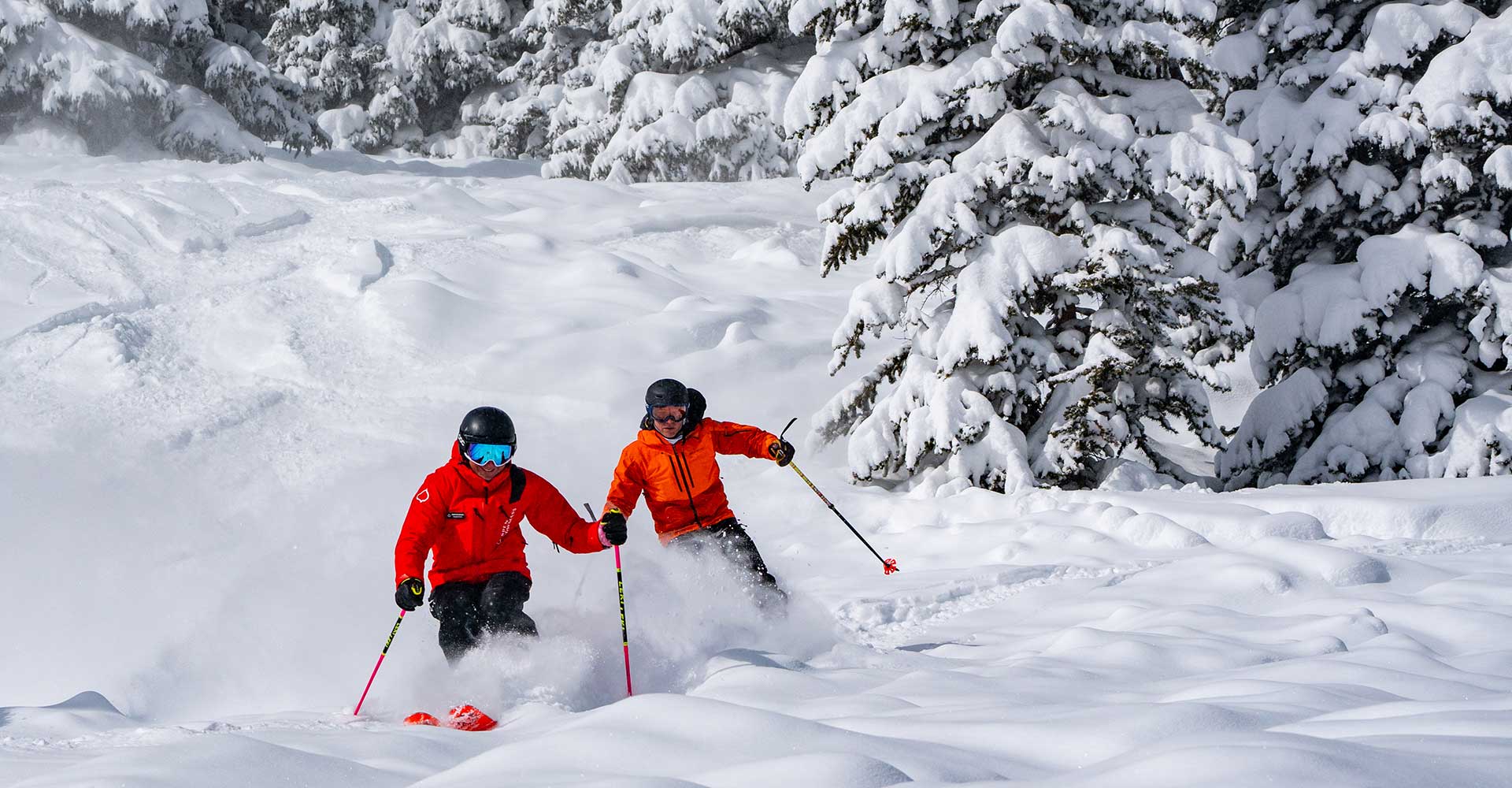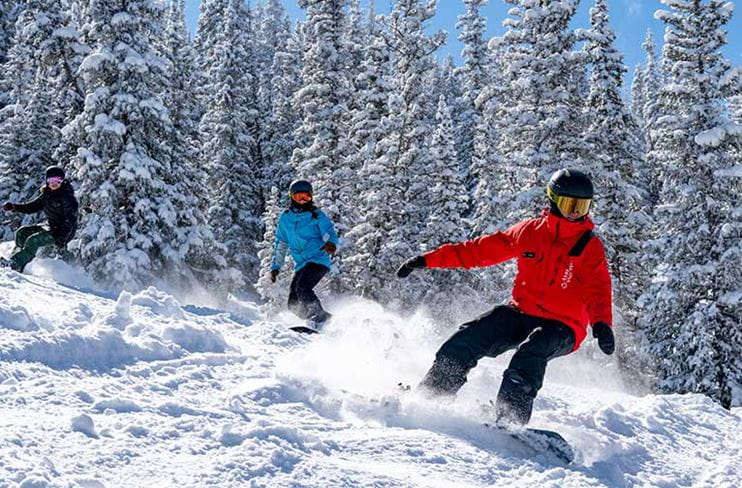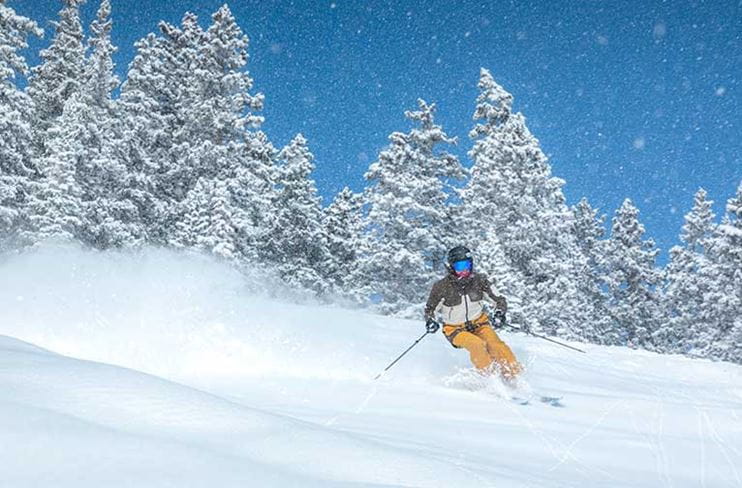
Ski Pro Tips For Skiing At Every Level
We tapped the best ski Pros in the business to give you a leg up on the slopes.
Beginners to a sport benefit from teaching, but you don’t have to be a beginner to learn something new. In skiing, learning at every level opens opportunities and the freedom and joy that comes with progression.
“As you develop as a skier, you’ll see things on the trail map that you didn’t even know were there, and the mountain will get that much bigger,” says Audra Schmidt, a ski Pro and lead trainer at Aspen Snowmass. “It’s like a video game—with each level it unlocks different aspects of the mountain.”
Schmidt and Darnell Rose, a ski and snowboard Pro based on Aspen Mountain, offer tips for skiing at every level.

Ski Pro at Aspen Snowmass laughs on the lift with their student
Green Level
Adjust Expectations
Baby Steps
Just Breathe
Body Position
Focus
Pole Position
Turning

Ski lesson with Aspen Snowmass Pro, at Aspen Highlands
Blue Level
Make a Plan
Remember the Ankles
Hugging Hands
Capital C
Tip It
Skid Steer
Double Trouble
Feel It, Believe It

Skiers enjoy powder and bumps at Aspen Highlands
Black Level
Look Before You Leap
Steady Does It
Commitment Rules
Carve It Out
Powder Hound
Mogul Mania

Skiers tackle the Bowl at Aspen Highlands
Double-Black Level
Plan, Plan, Plan
Modesty is the Best Policy
Explore!
Whether you’re new to snow or a lifelong skier or rider, our Ski & Snowboard Pros aren’t just some of the best instructors in the business, they’re also your expert guides, helping you harness and hone your skills while showing you everything our four mountains have to offer. Secure the best price and lock in your preferred dates when you purchase your group or private lessons seven days ahead of time, all season long.

